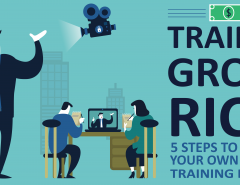Hello, I am back with the video shooting stuff again. Let me brush your memory. Do you remember reading a piece of my mind in the blog on 5 simple steps to professional video editing? If you have read it you’d have noticed that I touched upon the importance of lighting in your video (by the way, if you haven’t read the post, do so now. It’s pretty cool, I must say. Just click on the link in the previous sentence). Well, in this post I will be digging deeper on the art of lighting to help you shoot a spectacular video.
First things first, why is light so important for your video? Let me make it simple for you. Close your eyes and tell me what you see. There, there you can’t see anything (except for wiggly figures making you assume that you have microscopic vision enabling you to see the bacteria in the air). In some way or the other, the presence of light helps our vision and makes it much better.
The dimmer the light, the more your vision strains.
Likewise, for the man-made lens (in a camera) too, lighting is one of the most important aspects for shooting a good video. Whether you are setting up lights for an interview, video blog (also known as vlog), documentary, or just a really cool company advertisement, lighting is essential.
You Should Know: Do not be misguided by the idea that you always need film lights for good lighting, you can shoot a good video with available light.
What is available light?
As the name states it’s the available light (by default) present in a place at any point of time, that is, you are not adding any of your own lights but just using what is available in the area. Now don’t go thinking “Well, there seems to be enough light in the given area therefore all I need to do is start rolling.” WRONG.
Just because there is enough light does not mean you are ready to shoot. You need to make sure that shadows of your equipment or anything that shouldn’t be in the video doesn’t fall on to the scene. Lens flares and bleached out images - these you need to be extremely cautious about. They are huge deal breakers when it comes to shooting a good video because overlooking it would make the video look absolutely pathetic.
Now let’s take an example of shooting a documentary. Most documentaries are shot outdoors during the day. There is a lot of available light but there is also a problem of over exposure. The presence of the sun and its intensity might enforce an abundance of white light.
Therefore, the following three rules:
This is probably the best advice you can get to maintain good lighting. Following this rule does three things: The light creates interesting shadows on the object you are shooting, you don’t get lens flares, and it holds the color saturation of the image.
When you are shooting something like a building, person, etc., it’s important to make it look interesting for the viewer. The best way to do that is to create shadows in the image. It enhances the object and just makes the viewer want to see more.
Lens flares are caused because the sun is reflected on the lens of the camera. So, obviously, if you angle the camera with the sun facing you it will cause lens flares. Lens flares can be used to create something more artistic but rarely, as having it causes a lot of problems.
Color saturation is important because if you shoot with the sun in front of you, all you are really doing is making the object white washed and it would look a lot flatter. With the sun behind you, you can give more vibrancy and color to the shot.
If you absolutely have to shoot with the sun in front of you then you have to use a flag. There are two types of flags. The lighting flag which you can make yourself as long as you have an opaque object that you spray in black. Then there is something called a French flag (not the country’s flag), which has a secured flexible arm with a sheet of black aluminium stuck to it. It’s used to shade the lens from the sun so that those pesky sun flares can be reduced.
Since you are shooting in front of the sun you might want to use reflectors in creative ways, why not? A reflector, as the name suggests, is used to reflect the light from the sun back onto the object you are shooting. This creates a cool effect on the object. If you don’t want to spend money on a reflector then you could do it yourself.
Hope you learnt something interesting to make your videos a tad more interesting. Have cool videos and want to share it privately? You know what to do. Just sign up for a free trial instead and check us out!


